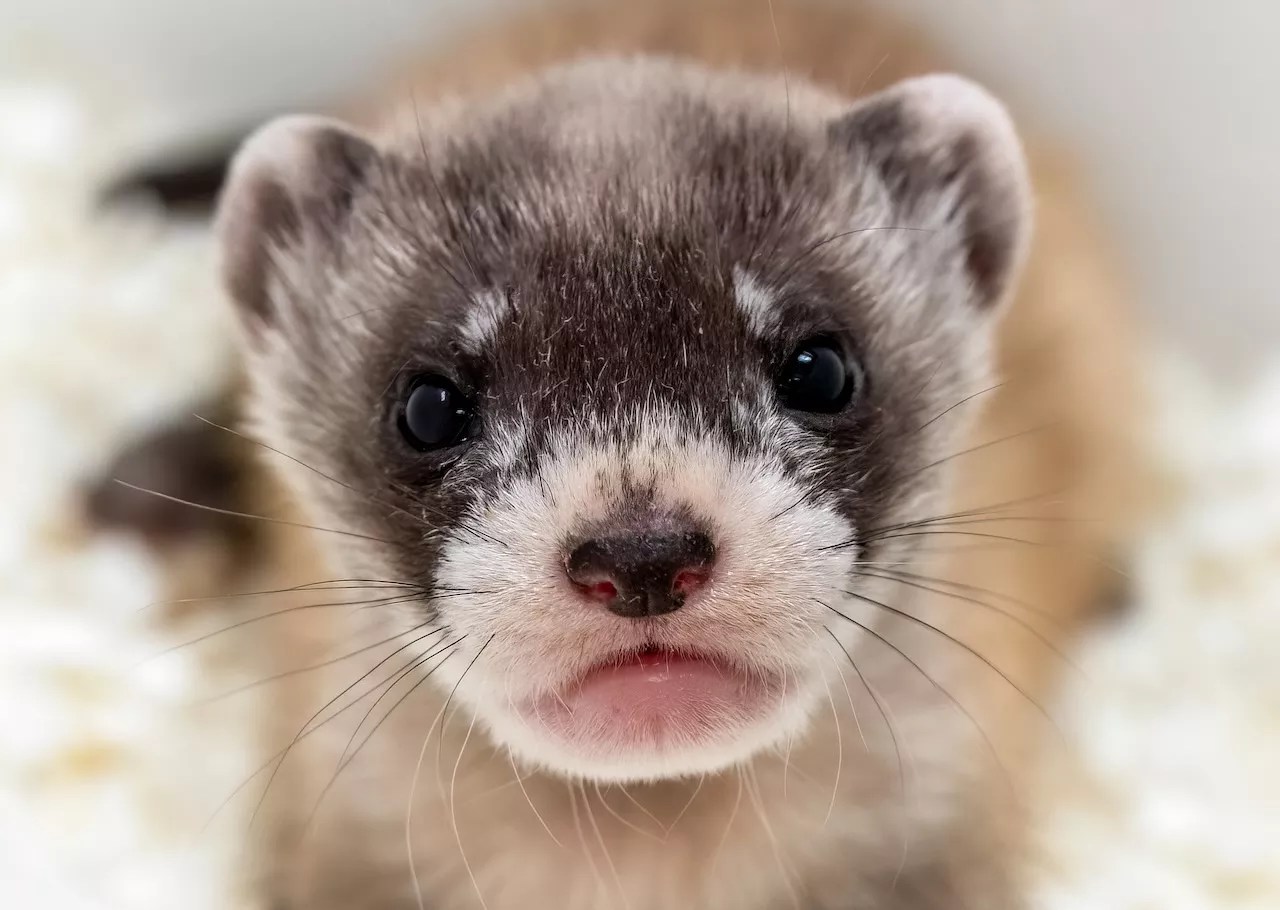
Phoenix Zoo

Audio By Carbonatix
Arizona is home to one of North America’s most endangered mammals: the black-footed ferret. But, with only 350 left in the wild as of 2023, their battle for survival is more critical than ever.
As the only ferret species native to the continent, the impossibly cute 2.5-pound wild mammal is a key signifier of the health of the grassland ecosystem they call home, according to the World Wildlife Fund.
In a move to help save the endangered black-footed ferret, the U.S. Fish and Wildlife Service finalized a rule to expand the reintroduction of experimental populations of the ferret on Oct. 4. The rule was first instated in 1996 and included parts of Coconino, Mohave and Yavapai counties. Since then, it’s been one of the few spots in Arizona where officials released captive-bred black-footed ferrets into the wild.
Although the Aubrey Valley Experimental Population Area, as it came to be known, encompasses a large area of land, the ferrets continually venture outside of the barrier. As a result, USFWS proposed to expand the ferrets’ territory in June 2021.
This year, make your gift count –
Invest in local news that matters.
Our work is funded by readers like you who make voluntary gifts because they value our work and want to see it continue. Make a contribution today to help us reach our $30,000 goal!
Two years later, the land expansion plan is finally on track.
Starting Nov. 6, officials will expand AVEPA to be part of a wider Southwest Experimental Population Area – or SWEPA, for short.
“One of the most endangered mammals in North America received a boost today thanks to the flexibilities built into the Endangered Species Act, such as section 10(j), that continue to be instrumental in achieving recovery goals for listed species,” said FWS Southwest Regional Director Amy Lueders in a press release.
“The visionary, innovative and determined actions taken by our Service team members; tribes; federal, state and local governments; conservation organizations; and private citizens continue to make the recovery of the black-footed ferret possible,” Lueders added.

An expanding habitat across Arizona will provide more places where ferrets can be reintroduced.
Phoenix Zoo
More free range ferrets coming to Arizona, New Mexico, Utah
In total, SWEPA will encompass 40.9 million acres, a “184-fold increase in area from the AVEPA,” according to USFWS. This will include the Hualapai Reservation and the entire Navajo Nation, which extends into New Mexico and Utah. It also will include most of the Hopi Reservation – tribal leaders asked that villages in the 6th Congressional District be excluded.
The widely distributed habitat means officials will be able to find new places where they can reintroduce ferrets, USFWS said.
“Within the SWEPA, the USFWS anticipates the need for at least five ferret reintroduction sites,” the agency wrote in the Federal Register. “Currently, six areas are considered to be established or potential reintroduction sites.”
Some reintroduction sites are still under consideration because they currently don’t have enough prairie dogs, which comprise 90% of a black-footed ferret’s diet, according to the National Park Service.
“The USFWS is working with partners to encourage and implement purposeful prairie dog management and to identify additional potential reintroduction sites within the SWEPA,” the Federal Register report noted.
You can support the reintroduction of these endangered critters through the simple act of sipping craft beer.
A collaboration between Huss Brewing Co. and the Phoenix Zoo led to the creation of Black-Footed Ferret IPA. The limited-edition beer, which comes in a decorated with a drawing of the ferret, debuted on Oct. 1 and is available in the zoo’s gift shop. Each sale supports conservation efforts.
Currently, the Phoenix Zoo is one of only six black-footed ferret breeding facilities in the world.